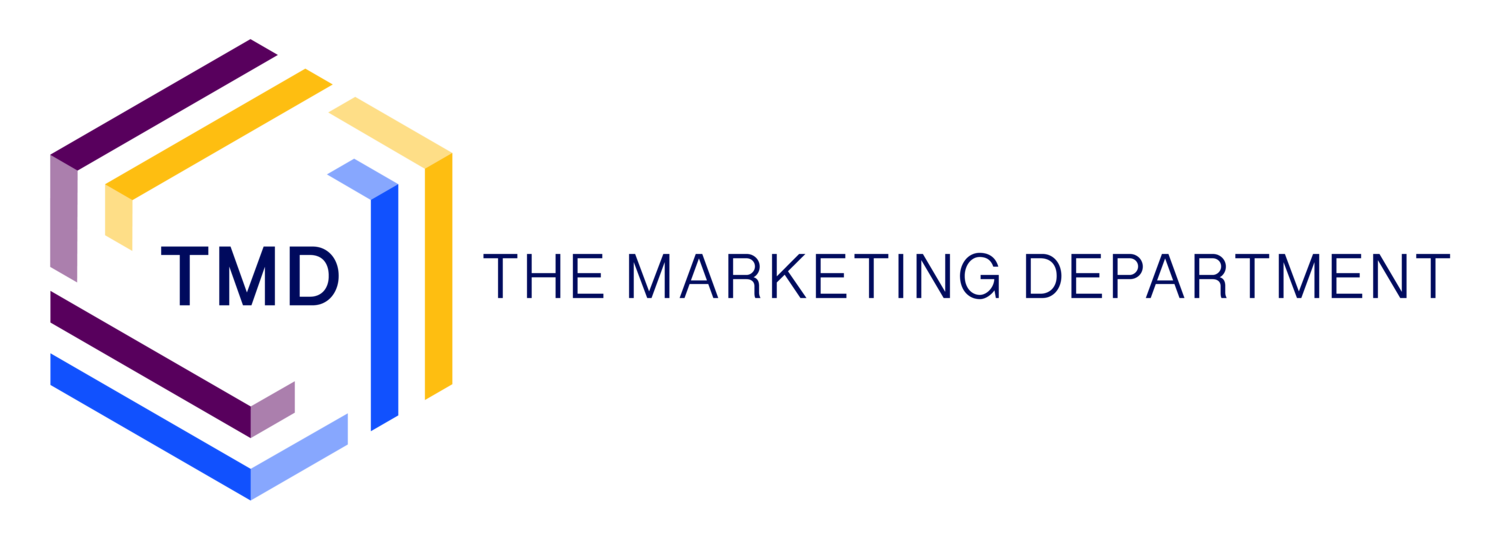5 Questions With — Laura Gwafa, Graphic Designer
Our ‘5 Question With’ series shares insight into the TMD teams’ experience of agency life. In the second instalment, Graphic Designer Laura talks about what inspires her.
What do you like most about being a graphic designer at TMD?
I would say the opportunities for learning. There’s so many things that I didn’t know before that I know now.
Graphic design is way more intricate and precise than I am in general. It’s an art-form. Working with [TMD Creative Director] James, I’ve learnt how the tiniest details can make or change a design. For example, the colour of a logo can completely change how you might feel towards that logo — like, what if the Coca Cola brand was green? Colour palettes, the shape of text, even the way a design might appear from a particular viewpoint or alongside other objects — it all makes a massive difference.
Beyond the technical, I’ve learnt too about people and business. For me, business is all about people pleasing and getting to know what drives and motivates. [TMD CEO] Chris is great at that — he’s able to inspire in people not just hope, but belief in what we’re doing. If someone comes to the TMD studio with doubt, they’ll probably leave without doubt, because of how we work and how that is communicated.
Aside from the learning opportunities, I also appreciate TMD’s work environment, the people, the culture. It’s so flexible, both in terms of how we work and our diverse range of clients. No two days are the same.
Before joining the TMD team, you studied Interior Design at Glasgow School of Art. Are there any aspects of interior design you’re particularly inspired by at the moment?
I wouldn’t say that I’ve found a style of interiors that I’d consider my ‘niche’. My interests change all the time because there’s just so much good stuff out there.
I will say, however, that even the most mundane, stripped-back interiors communicate a lot, and sometimes the most extravagant interiors don’t interest me. What I appreciate the most is the little things, the details.
This sounds ridiculous, but… toilets, in interior design. As in, bathrooms, WCs, whatever you want to call them. When a toilet is done well I am very impressed. Because it’s a transient space that most people put no thought into. People also don’t realise how impactful an environment a toilet is — the furnishings, the lighting, the textures — it’s all very tactile. Even the smell! For me, each bathroom I’m in affects the way I feel about the place that I’m in, be that a restaurant or a house or my own home.
Maybe I have too much regard for toilets. Like, yesterday I was in a restaurant called Fat Hippo, and I was so impressed because they had an all black toilet. All black! You could tell they’d designed that toilet, and you could tell it was good design. They invested in their toilet. Listen, all I can say is — the standard of the toilet informs how people will treat it.
Do you consider yourself more of an interior designer or a graphic designer?
Good question. I would say, both! I think I will always gravitate towards interiors because of my degree, but there’s no interiors without graphic design, and graphic design exists in physical spaces. It’s all design and art at the end of the day, which people are living their lives via and navigating all the time.
With regards to graphic design, people are looking at posters, wayfinding, packaging, and these things are communicating, and they’re navigating that. And with regard to spaces too — we live in them, coexist in them, they can be small or large or huge, and we’re navigating that as well.
So graphic design, interiors… it’s all art, it’s all people living.
Outside of work, you’ve been involved with the Scottish Fashion Association. Do you have any fashion icons you look up to?
A lot of people would say their parents, and I do like to wear my mum’s clothes — very 90s.
I also like Rick Owens, and Yves-Saint-Lauren, because I really like some of their all black collections. It’s a great base colour; you can’t go wrong with it. It’s masculine and feminine. It’s the beginning and the end. ‘If only they had it in black’, I think all the time when buying clothes. Colour is wonderful but I gravitate towards strong silhouettes. Not loud, just simple. Something clean and classic and timeless. You can never go wrong with a black blazer, or black shoes, or a black dress.
Going back to what I was saying before, fashion is again just people living. I enjoy spending money on clothes. Some people don’t see the value in that. They’ll say, ‘I’m not a fashion person’, and I’ll say, ‘You are, you’re wearing fashion right now’. Your clothes are communicating whether you like it or not. And not just in terms of self-expression — this could be your social standing, the climate you live in etc. Like interiors or graphic design, fashion is an expression of life.
What have been your highlights of working at TMD?
Joining the team in February was a real highlight. Everyone was so nice and welcoming, I was very surprised. I even got my own press release! I enjoyed that for the first month at least.
My other big highlight was the first design project I got to lead on. I didn’t really know what to expect having taken on the challenge, and as I got into it there were plenty of stumbling blocks. But through the process of editing and feedback, it got to a point where I was like, I can’t believe I’ve got here, I did that!
A new project came along, designing a new brandmark for SEMA (Scottish Ethnic Minority Autistics). I got stuck into it and the experience was so much more straightforward and simple and what can I say, she landed! It was a great boost and has given me confidence for whatever comes next.







